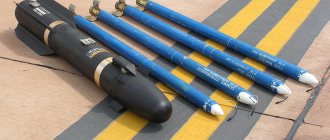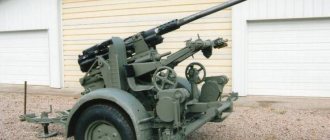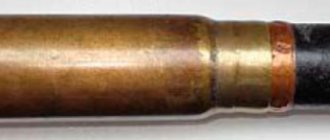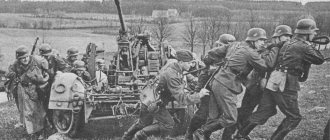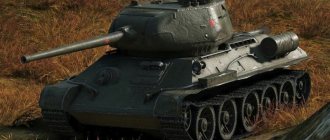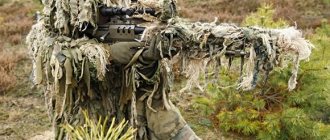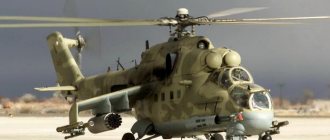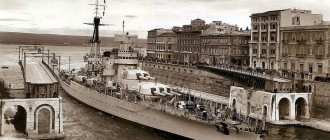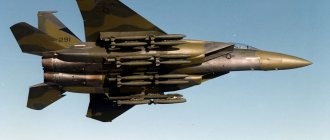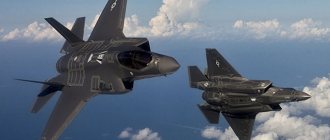Photo: Evgeny Baranov
On October 28, Russia celebrates Army Aviation Day. The main means of this type of troops are helicopters for various purposes, including combat helicopters, or, as they are also called, attack helicopters. Mi-28 helicopters have been in service with the Russian Ministry of Defense since 2013. In 1982, the combat Mi-28 took off for the first time, and 14 years later the modified Mi-28N “Night Hunter” was developed. The helicopter continues to be improved, and the Mi-28N is being replaced by the Mi-28NM, updated taking into account the combat experience in Syria. For its high flight characteristics and reliability, the new helicopter received the respectful nickname “Nikolai Mikhailovich” from the pilots.
Enhanced armor protection, increased combat survivability, a modern high-precision weapon system and other advantages of the new “Night Hunter” are in our material.
History of the development of the Mi-28 combat helicopter
The development of the helicopter has been carried out on a competitive basis since the end of 1976. Two design bureaus competed during the event: Kamova and Mil. The Mil Helicopter Plant began working on the Mi-28 helicopter in 1978, and in parallel, developments on the B-80 (later became the Ka-50) appeared at the Kamov Design Bureau. The aircraft in question was conceived as a combat helicopter for two pilots.
The first sample was assembled at the end of 1982; it did not carry weapons on board, therefore it was intended solely for evaluating flight performance. In the fall of next year, a second copy was assembled, which was already equipped with combat systems. In addition to mounting the weapon, the second sample took into account all the comments that were voiced by the commission after evaluating the first vehicle.
After taking into account all the customer's comments, pilot production began in 1985. The aircraft then underwent a number of upgrades, after which it was given the designation Mi-28A, and testing began in early 1988. Their successful implementation made it possible to show the new product at the Paris Air Show the following year, then in London and on the territory of the Soviet Union at the aviation festival in Tushino.
At the beginning of 1991, the second model of the helicopter entered testing. The apotheosis of the evaluation of the new product was the combined arms exercises near Gorokhovets in 1993, in which the vehicle performed excellently.
Various designs of the Mi-28, worked out by the designers.
It is worth noting that all this time work was also carried out on the competitor of the Milevsky machine - the Ka-50. To compare their capabilities, joint flights took place in 1986, during which the Mi-28 was able to detect all targets at low altitude. “Mi” itself went unnoticed. The Kamov machine was able to identify only 2 targets out of 25 at a higher altitude.
Then modernization continued, during which by 1996 the first Mi-28N appeared. In the fall, the brainchild of designers V.A. Stekolnikov and V.G. Shcherbina rose into the air.
In 2005, state joint tests began, during which it was planned to carry out large-scale ground work and test flights. This made it possible to fully evaluate the capabilities of the machines. In order to resolve all issues that arise during the testing process as quickly as possible, the testing commission was headed by the Commander-in-Chief of the Air Force himself. The first stage of activities was completed two years later, it ended with the issuance of a preliminary conclusion on the possibility of starting production of the pilot batch.
The verification steps included:
- The first step is to carry out combat missions around the clock, destroying ground targets using the main weapon system;
- The second is the use of missiles to destroy air targets, testing electronic jamming systems that will ensure the survivability of the vehicle.
The tests were successfully completed at the end of 2008. It was established that the helicopter complies with the specifications in all respects.
Mi-28 - one of the versions of combat equipment
The Mi-28N “Night Hunter” was adopted by decree of the head of state a year later, and in 2013 it was adopted by the Ministry of Defense.
Exploitation
In 2005, a long-term contract was signed for the supply of 67 Mi-28N helicopters until 2013.
In 2005, the Chief of the Russian General Staff, Army General Yuri Baluevsky, stated that the Ka-50 and Ka-52 helicopters are necessary for special forces units. Although in this case the main combat helicopter will be the Mi-28N “Night Hunter”.
In the second half of June 2006, two Mi-28Ns took part in command and staff exercises on the territory of the Republic of Belarus, called “Union Shield - 2006”. These were the first prototype OP-1 and the first pre-production 01-01 (tail number 32).
On September 7 in Rostov-on-Don, the Air Force Commander-in-Chief took part in a meeting of the state commission for conducting state tests of the Mi-28N at Rostvertol OJSC. The meeting participants summed up the results of the first stage of state testing of the Mi-28N and checked the readiness of military-industrial complex enterprises for mass production of the helicopter.
| The act of accepting the Mi-28N into series will be signed by September 30, during which time the industry will eliminate the shortcomings identified during the first stage of state tests. |
The first 4 production Mi-28Ns arrived at the Torzhok Center for Combat Use and Retraining of Army Aviation Flight Personnel in 2008. On January 22, 2008, the first two helicopters arrived at the Torzhok Pulp and Paper Plant and PLS AA.
In 2009-2011, the Russian Air Force will receive 27 Mi-28N helicopters. The first production helicopters are supplied to units of the 4th Air Force and Air Defense Army.
In 2009-2010, at airbase 6971 (487th separate helicopter regiment) near Budyonnovsk, the first helicopter squadron of 16 serial Mi-28Ns was formed.
In October 2010, deliveries began to the 6974th air base (55th separate helicopter regiment).
In 2010, 12 Mi-28N were delivered. In total, by the end of 2010, 38 helicopters were delivered to the Russian Ministry of Defense. In 2010, a second contract was signed for the purchase of another 30 Mi-28N with delivery by 2014.
Thus, as of the end of 2010, in total, the Ministry of Defense of the Russian Federation concluded contracts for the supply of 97 helicopters until 2015.
As of 2011, the MTBF of the Mi-28N was 8.1 hours versus 13.9 for the Mi-24. In 2011, 14 Mi-28N were delivered.
From 2001 to 2012, 63 Mi-28N were delivered
In 2012, 14 Mi-28 were delivered to the Russian Defense Ministry
Main tasks of the Mi-28
The attack helicopter was required to perform a wide range of missions on the battlefield. Equipping with innovative flight and navigation systems made it possible to fight in any conditions, regardless of the time of day and meteorological situation.
The main tasks of the machine are as follows:
- Support of ground forces during combat operations;
- Destruction of tanks, armored vehicles of various types;
- Escort of troops dropped from helicopters;
- Destruction of aircraft with characteristics comparable to helicopters.
There is a special compartment that can accommodate 2-3 people. This allows the vehicle to be used to evacuate crews of damaged vehicles from the battlefield.
To perform a combat mission, you can transport a helicopter in the cockpit of transport aircraft, such as:
- IL-76;
- An-124;
- An-24.
After unloading the strike vehicle from the transport vehicle, it is necessary to prepare it for departure. This only takes an hour and a half.
Design Features
To create the helicopter, it was decided to use an all-metal semi-monocoque fuselage design, which is traditional for most modern helicopters and developments of that time.
Some design solutions were taken from the Mi-24; it was this aircraft that the army was supposed to replace with a new product. For example, the location of the crew in the cockpit is identical to its predecessor, since placement next to each other did not allow obtaining the required viewing angles. The proven principle is also safer.
The layout was selected on the basis of 6 full-size mock-ups, which were created sequentially to solve the problem.
On-board radio-electronic equipment complex
The helicopter's avionics meets the requirements for 5th generation systems. Their developer is the Federal Research and Production Center "RPKB".
Mi-28 before takeoff
Electronics allows you to perform the following tasks:
- targets within the group are distributed automatically;
- The helicopter can be used in almost any weather conditions and at any time of the day;
- it is allowed to perform combat missions at the lowest possible altitude;
- communication is maintained with all ground and air command posts, as well as with gunners;
- simultaneous use of combat systems by the operator and pilot is ensured;
- it is possible to adapt new electronic systems, support and automation tools;
- Thanks to the maintenance of components and assemblies according to their technical condition, operation is allowed at long distances from bases and airfields.
In addition to all these functions, each vehicle is capable of carrying out target designation to other helicopters/planes and conducting reconnaissance.
The list of standard kit is as follows:
- Computer "Baguette-53", which uses a single interface and, based on it, processes incoming data;
- Liquid crystal indicators MFI-10-6M are located in the control field of the cockpit, a PS-7V remote control is integrated, with which video information recording devices are combined;
- High-precision INS-2000 and directional vertical SBKV-2V-2 are combined into one complex with a navigation system connected to the satellite. The speed and drift are controlled by a Doppler meter DISS, an apparatus for collecting and analyzing airborne signals from the Air Force, and a long-range navigation system - RSDN are also integrated;
- System for direction finding of radiation in the ultraviolet spectrum, detection of electronic and laser irradiation;
- Automatic control - self-propelled guns;
- Equipment for controlling combat systems;
- Indication and target designation on pilots’ helmets;
- Aerobatic machine complex;
- Tools for working with targets (from detection to launch), based on television and thermal imaging channels;
- Means for performing combat missions in any terrain and in any weather conditions. Designed for pilot use and includes night vision goggles;
- KSS-28N-1 – on-board communications equipment.
One of the important elements of the machine is the “Okhotnik” thermal television machine gun. The development of the Federal State Unitary Enterprise "GRPZ" carries out intelligent image processing and can calculate and track targets.
Engines
Previously, the vehicles were equipped with Ukrainian engines, which have now been replaced with VK-2500. These turboshaft power plants are produced by the Klimov plant. In comparison with the earlier TVZ-117VMA, the power has been increased to 20%, there are new control and monitoring systems that operate automatically.
Mi-28, rocket launch
Thanks to the parameters of the motors, the ceiling of the aircraft increased to 30%, the ascent speed increased by 50%, and the load capacity increased by 1-2 tons, depending on the modification.
Armor
The main protection for the crew is provided by the cabin armor: 10 mm sheet aluminum, which is externally reinforced with 16 mm ceramic armor elements. This product is not penetrated by 7.62 and 12.7 mm bullets.
The cabin doors are fiberglass, the armor is similar to that described on the cabin.
The windshield is made of transparent 42 mm silicate blocks. The side windows and doors have the same blocks, but thinner - 22 mm.
The pilot and operator cabins are separated from each other by a 10-mm aluminum armor plate. It allows you to avoid the death of both pilots even if a small-caliber high-explosive incendiary shell explodes in one of the cockpits.
Electronics
Electronics allow the helicopter to carry out combat missions at an altitude of 5 meters, while in flight it skirts uneven terrain.
The security of the circuits is ensured by their duplication. For example, the most important units and wiring are placed on different sides, and the more important ones are blocked by the less important ones.
A jamming agent is used, which makes it possible to combat radar stations and infrared warheads. On later models, the Vitebsk L370 complex is installed with a similar task.
It is noted that the vehicle is capable of independently performing combat missions without an airfield for 15 days.
Locator
The locator, installed above the rotor hub, is an innovative development. Its main advantage is that it provides all-round visibility. It is reported that experienced pilots can hover and expose only the locator from behind an obstacle, which allows them to analyze the situation, keeping the helicopter safe.
Blades and tail rotor
The blades are made of composite materials. The main idea in their development was to maintain high residual strength even with significant damage.
The unique design and use of modern components/materials made it possible to achieve the highest maneuvering characteristics of the helicopter.
In particular, the aircraft can do:
- Nesterov loop;
- Immelman's coup;
- barrel;
- fly sideways, backwards, sideways at speeds up to 100 km/h;
- turn with angular speed up to 117 degrees/s;
- develop an angular roll rate of more than 100 degrees/s.
All this is of great importance in battle, as it increases survivability. To match the piloting systems and weapons, for example, the automatic gun is designed in such a way as to target a potential enemy and fire without reducing speed.
Specialized armed
Considering that the US Army, since 1960, wanted to have a specialized armed helicopter for escorting multi-purpose and transport, as well as for direct support of ground troops with a crew consisting of a pilot and a gunner, it proactively developed a specialized combat helicopter, the Warrior. Its full-size mockup made it possible to work out the main design and layout solutions.
Helicopter N-21 at the moment of firing the NAR
In June 1962, despite the positive conclusion of the mock-up commission, the military rejected the project as not fitting into the general concept of army aviation, since according to the regulation adopted in 1948, the weight of army helicopters was limited to 2,255 kg.
Helicopter N-21 with nose turret
The company decided to develop a lightweight demonstration model. To speed up its construction, the dynamic systems, engine and skid chassis of the OH-13 Sioux helicopter were used. What was new was a streamlined fuselage, a smaller midsection with a closed cockpit, in which the crew, consisting of a pilot and a gunner, was located in tandem. The pilot's seat was raised relative to the gunner's seat, which remotely controlled a streamlined turret with two 7.62-mm M60 machine guns installed at the bottom of the forward fuselage. The turret rotated 200° in azimuth and deflected vertically at an angle from - 45° to + 15°. A small vertical and horizontal tail unit and a wing were installed on the helicopter, which served to unload the main rotor (RO) in flight and improve maneuverability. In addition, additional TB and weapons were suspended on its console, which was of small extension.
One of the helicopter armament options was tested by the Americans on the Pyasetsky H-25 helicopter. It was armed with launchers, each of which had 132 38-mm caliber rockets and two machine guns
An experimental helicopter, designated Bell 207 Sioux Scout, was successfully tested in April 1963, which resulted in requests for increased armament and the installation of a gas turbine engine. Despite this, the main goal was achieved - the attack helicopter announced itself. Built in one copy, the Sioux Scout had a significant influence on the concept of an attack helicopter, and its design solutions formed the basis for the design of all attack combat helicopters and determined their appearance for many years to come, not only in the United States, but also in many other countries. The most important thing was that this work led to the announcement of a competition for the development of an advanced fire support system, AAFSS (Army's Advanced Aerial Fire Support System).
Performance characteristics
The aircraft is designed for two pilots, however, options for equipping it with innovative control systems were offered. Electronics in this form can take over most of the functions of the second crew member.
Mi-28 N, performance characteristics
TTX:
| Parameter: | Meaning: |
| Rotor diameter, mm | 17200 |
| Tail rotor diameter, mm | 3840 |
| Helicopter length, mm | 16850 |
| Helicopter height, mm | 3820 |
| Weight (empty/maximum), t | 7,89/11,5 |
| Engine power, hp | 2 to 2215 |
| Service ceiling, km | 5,75 |
| Flight range, km | 460 |
| Vertical ascent speed, m/s | 13,6 |
| Speed (horizontal flight, maximum/cruising), km/h | 300/260 |
Depending on the modification and configuration, the parameters may vary greatly. For example, a significant increase in capabilities was demonstrated by the replacement of Ukrainian engines with newer Russian ones.
Comparison with analogues
Comparative performance characteristics of modern attack helicopters
| Comparative performance characteristics of modern attack helicopters | ||||
| Mi-28N | Ka-52 | AH-64D Apache Longbow (Block III) | Bell AH-1Z Viper | |
| Appearance | ||||
| Year of adoption | 2009 | 2011 | 2011 | 2011 |
| Empty weight, kg | 8095 | 7800 | 5165 | 5580 |
| Fuel weight, kg | 1500 | 1500 | 1100 | n/a |
| Weight of combat load, kg | 2300 | 2800 | n/a | n/a |
| Built-in cannon | 1 x 30 mm 2A42 | 1 x 30 mm 2A42 | 1 x 30mm M230 | 3 x 20mm M197 |
| Suspension points | 4 | 6 | 4 | 6 |
| Maximum take-off weight, kg | 12 000 | 10 800 | 10 400 | 8390 |
| Power point | 2 × “Motor Sich” VK-2500-02 | 2 × Motor Sich VK-2500 | 2 × General Electric T700-GE-701D | 2 × General Electric T700-GE-401C |
| Engine power, l. With. | 2 x 2200 | 2 x 2400 | 2 x 2000 | 2 x 1800 |
| Maximum speed, km/h | 300 | 310 | 265 | 300 |
| Practical range (without PTB), km | 450 | 520 | 480 | 680 |
| Practical ceiling, m | 5000 | 5500 | 5900 | 6100 |
| Rate of climb, m/s | 13,6 | 10,0 | 12,3 | 14,2 |
| Cost, million USD | ~8,0 | ~27,0 | 52,0-61,0 | 27,0-31,0 |
| Augusta Westland T129 | Eurocopter Tiger | Denel AH-2 Rooivalk | Kawasaki OH-1 Ninja | |
| Appearance | ||||
| Year of adoption | 2012 | 2003 | 1999 | 2000 |
| Empty weight, kg | 2530 | 3060 | 5730 | 2450 |
| Fuel weight, kg | n/a | 1100 | 1470 | n/a |
| Weight of combat load, kg | 1200 | n/a | 1560 | n/a |
| Built-in cannon | 3 x 20mm 197B | 1 x 30mm GIAT 30 | 1 × 20 mm F2 | — |
| Suspension points | 4 | 4 | 6 | 4 |
| Maximum take-off weight, kg | 5000 | 6600 | 8750 | 4000 |
| Power point | 2 × LHTEC CTS800-4A | 2 × Rolls-Royce MTR390-E | 2 × Turbomeca Makila 1K2 | 2 × Mitsubishi TS1-10QT |
| Engine power, l. With. | 2 x 1360 | 2 x 1464 | 2 x 1500 | 2 x 890 |
| Maximum speed, km/h | 280 | 290 | 280 | 280 |
| Practical range (without PTB), km | 550 | 740 | 700 | 550 |
| Practical ceiling, m | 6000 | 4000 | 6100 | n/a |
| Rate of climb, m/s | 11,3 | 14,0 | 13,3 | n/a |
| Cost, million USD | 43,0-53,0 | 39,0 | ~40,0 | n/a |
| Harbin Z-19 | CAIC WZ-10 | HAL LCH | HESA Shahed 285 | |
| Appearance | ||||
| Year of adoption | — | 2011 | 2013 (plan) | n/a |
| Empty weight, kg | 2350 | 5400 | 3000 | 820 |
| Fuel weight, kg | n/a | n/a | n/a | n/a |
| Weight of combat load, kg | n/a | 1500 | n/a | n/a |
| Built-in cannon | 1 × 23 mm | 1 × 23 mm | 1 × 20 mm | 1 × 7.62 mm |
| Suspension points | 4 | 4 | 4 | 2 |
| Maximum take-off weight, kg | 4500 | 7500 | 5500 | 1450 |
| Power point | 2 × WZ-8A | 2 × Pratt & Whitney Canada PT6C-67C | 2 × HAL/Turbomeca Shakti | 1 × Allison 250-C20J |
| Engine power, l. With. | 2 x 850 | 2 x 1530 | 2 x 1200 | 1 x 420 |
| Maximum speed, km/h | 245 | n/a | 275 | 225 |
| Practical range (without PTB), km | 700 | n/a | 700 | 800 |
| Practical ceiling, m | 4900 | n/a | 6000 | 4150 |
| Rate of climb, m/s | 9,0 | n/a | 12,0 | 7,0 |
| Cost, million USD | n/a | n/a | ~22,0 | n/a |
Advantages and disadvantages
The main problem of the Mi-28, as well as the entire Russian complex, is a serious lag behind the United States in electronic systems. Taken together, this prevents the potential from being fully realized.
Most of the Okhotnik’s electronics are built on the element base of the French and Swedes, but domestic engineers are developing their own systems.
Among the high characteristics, especially important is the ability to fly at extremely low altitudes. The aircraft is the only one in the world capable of automatically flying at an altitude of 5-15 meters and completely enveloping the terrain, regardless of complexity.
Helicopter armament
To equip it with combat systems, there are 4 suspension points under the pylons; in addition, a 2A42 cannon of 30 mm caliber is used. The gun is mobile and equipped with 250 rounds of ammunition. The gun hits manpower (up to 4 km), lightly armored (1.5 km) and low-speed aircraft (up to 2.5 km).
The following types of missiles can be placed on the suspensions:
- NAR S-8 - 4X (20 pieces), refers to unguided missiles;
- NAR S-13 - also unguided, suitable for combating enemy personnel, lightly armored vehicles and infrastructure;
- Guided ATGM "Sturm-V" - 16 pieces;
- Guided "Ataka-V" - 16 pieces;
- Guided "Ataka-VN" - 16 pieces;
- To defeat Strelets aircraft with the Igla-V missile - 4X4.
bEPRNKER lH-28mschThe attack aircraft also includes a KMGU-2 container, which is used for a number of tasks. It allows you to transport small-sized cargo and install minefields.
(Mi-28NE Night Hunter) - SHYYAONPRMSHI BYUPKHMR lH-28m “mNVMNI NUNRMKHY”. aNEBNI BEPRNKER lH-28mshch, BSHOSYAYUELSHI "pNYARBEPRNA", OPEDMYUGMYUVEM DK ONKHYAYU KH SMHVRNFEMKH RYUMYNB, APNMEREUMKHYH, FHBNI YAKSH OPNRKHBMKHYU, SMHVRNFEMKH GYUYKHYEMMSH U NAZEYRNB X ONPUFEMKH OKNYYUDMSHU JACKEYS, ONKHYAYU X SMHVRNFEMKH YUREPNB X DPSTSKHU LYUKSHU OKYUBYAPEDYARB, ANPEASH I LYUKNYAYNPNYARMSHLKH X MHGYNKERYHLH kyu OPNRKHBMKHYU, BS ONKMEMH BYAEU ANEBSHU GYUDYUV DMEL X MNVECH B OPNYARSHU X YAKNFMSHU LERENSYAKNBHYU.
eYAKKH ASH lH-28msch LNFMN ASHKN NUYUPYUYREPHGNBYURE NDMHL YAKNBNL, RN ShchRN ASHKN ASH YAKNBN "GYUYKHRYU". oHKNR, GYUMKHLYUCHYKHI YPEYAKN YNLYUMDHPYU "mNVMNTSN NUNRMHYU", VSBYARBSER YEAE GYUYKHYYEMMSHL AKYUTSNDYUP ONKMNYARECH APNMHPNBYUMMNI YUAHME SHCHYHOYUFYU.
LEYARN YNLYUMDHPYU PUYAONKYUTSUERYA YAGYUDKH, NANPSDNBYUMHE X BSHYKCHVYUREKH PYUGLEYEMSH TSPSOOYULH MU OPHANPMNI DAYYE X MU ANYNBSHU OSKERYUU YAKEBYU X YAOPYUBY NR KERVHYU. pSVYU SOPYUBKEMKH GDEYAE YKYUYAYAHVEYAYYU, RN EYARE PYYYAONKNFEMYU LEFDS MNTs KERVKHYU, YU ONKERMYU HMTNPLYUZHKH NRNAPYUFUYUERYA I ONLNYECH DBSU LMNTsNTSMIZHNMYUKEMSHU DHYAOKE EB, YUMYUKNTSNBSHU KHMDHYURNPNB X KHMDHYURNPYU MU KNANBNL YAREIKE.
schKELEMRSH SOPYUBKEMKH DBKHTSUREKLKH YUY DK GYUOSYAYU, RYU KH DK PETSKHPNBYUMKH LNYNARKH PUYAONKNFEMSH MU OSKARE I KEBNI YARNPNMSH. RUL FE MUUNDHRYA OSKER SOPYUBKEMKH YUBRNOKHKNRNL, YNRNPSHI BSHONKMYER BYUFMSHE GYUDYUVKH ON YNMRPNNKCH KH SOPUUBKEMKHCH SHCHRHL "LNMYARPNL". yYuY Kommersant SFE SONLMSK, VYuYARE KhMTNPLYUZHKH OPEDYUERYA OKHKNRYUL VEPEG LMNTsNTSMYZHNMYUKEMSHE DHYAOKEKH - NMH YANBLEYARKHLSH I NVYULKH MNVMNTsN BKhDEMHЪ YKYUYAYANB "A" X "B "
YUBRNOKHKNR, KKH OHKNRYUFMSHI YNLOKEYA BEPRNKERYU (oib), KHLEER DBU NYAMNBMSHU PEFHLYU PYUANRSH: ONKMSHI YNMRPNKE ON VERSHPEL NYaL YNNPDHMUR H YAKHYARELYU NAEYAOEVEMH YARYUAHKHKHYU JXX. oEPBSHI NAEYAOEVKHBUER YARYUAHKHKHYUZHCH MU DKHREKEMSHI OEPKHND OPH ONKERE B YUBRNLYURHVEYAYNL PEFHLE H LNFER ASHRE YANBLEYEM I DKHPEIRNPMSHL SOPYUBKEMHEL. YAHYARELYU NAEYAOEVEMH YARYUAHKHKYUZHHH B YABNCH NVEPEDE NAEYAOEVHBUER YPYURYNYAPNVMNE ONDYUBKEMHE YNKEAYUMKHI OPH ONKERE B YUBRNLYURHVEYAYNL PEFHLE. KERYURE I BSHYKCHVEMMSHL HKKH MEKHYAOPYUBMSHL YUBRNOKHKNRNL GYOOPEYEMN. bNGLNFMN, MN GYUOPEEEMN.
RUYFE EYARE YUMYUKNTSNBSHE KHMDHYURNPSH, YNRNPSHE B UNDE NZHEMYKH ONYUGYUKH UNPNNSCH NYABEYEMMNNYARE KH VHRUELNYARE. ndMUYN YUY X MU RPEMYUFEPE, Kommersant NAMYUPSFKHK, VRN YYUKSHYAYNPNYARKH, BSHIANRSH X GLEMEMEMH BSHYANRSH SYUGYUMSH B YHKNLERPYU B VUYA, B LERPYUU X LERPYUU B YAYSMDS.
dBEPE GYUDMEI YUAHMSH APNMHPNBYUMMYU KH NRYARPEKKHBUELYU, NMJU MYUNDHRYA I OPYUBNI YARNPNMSH BEPRNKERYU. pЪDNL I DBEPECH EYARE MYUDSBMNI AYUKKNMER (ONDNAMSHYYUBYUPKHIMNLS RPYUOS), ON YNRNPNLS OKHKNR ONYKHDUER YUAHMS DK NRYPSHRH OYUPYUCHRYU B YUBYUPHIMSHU YAHRSYUZHHU.
oEPEDM YYUAHMY OPEDMYUGMYUVEMY DK VKEMYU SHCHYHOYUFYU, NRBEVYUCHYETSN GYU YAKHYARELS SOYUBKEMKH BNNPSFEMHEL BEPRNKERYU. b RN FE BPEL SHRN LEYARN HYAONKEGSERYA OHKNRNL-KHMYARPSYRNPNNL OPH NASVEMXX KERVKHYNB. GDEYAE PYYYAONKYUTSIUCHRYA SHKELEMRSH SOYUBKEMKH ANPRNBNI SHKEYRPNMHYNI KH YAKHYARELYULH BNNPSFEMKH. NYAMNBMYU HMTNPLYUZHH ONYARSOYUER Y KERVHYS-NOYURNPS VEPEG DBU LMNTsNTSMYZHNMYUKEMSHU KHMDHYURNPYU, YU RUYFE YUMYUKNTSNBSHE OPKHANPSH.
dBEPE - RUYFE APNMHPNBYUMMYU X NRYARPEKHBUELYU - MYUNDHRYA I KEBNI YARNPNMSH X OPEDNYARYUBKER RE FE BNGLNFMNNYARKH DK SHYARPEMMNTSN ONYKHDUMH BEPRNKERYU.
naE YUAKHMSH TSEPLERKHVMSH, B MKHU YANGDUERYA KHGASHRNVMNE DYUBKEMKHE GYU YAVER YAKHYARELSH, ONGBNKKYEI KHYAONKEGNBURE BEPRNKER B SYAKNBKHU PYUDKHYUZHNMMNTSN, UHLKHVEYAYNTSN X AKHNKN TSKHVEYAYNTSN GYUPYUFEMH.
RUYFE KHLERYA YHYAKNPNDMYU YAHYARELYU DK ONKERYU MU ANKEHU BSHIANRYUU, YANYARNYYYU HG LYUYAYH X YHYAKNPNDMNTSN AYUKKNMYU, YNRNPSHY YAONYANAY NAYEOEVHRE NDHM VYUYA ONKERYU B RYU YHU SYAKNBHU.
MEYASYKHI BKHMR BSHONKMEM I HYAONKEGNBUMHEL SHKYUYARNLEPMSHU ONDHOMKHYNB, BSHONKM'CHYKHU TSMYZHKHCH RPEU YUPMKHPNB, YU MYD ECN BRSKYNI PUYAONKYUTSUERYA PUDHNKNYUZHNMMYU Kommersant YARYUMZHKH BEPRNKERYU. YNKEAYUMHE KNOYUYAREI YNLOEMYAHPSERYA TsKhDPYUBKHVEYAYHLH DELOTEPYULH, YNRNPSHE KHLECHR SOPSTSKHE PEGHMNBSHE SHKELEMRSH B SHCHRNL YANEDHMEMHH. brSKYU MEYASYYETSN BKHMRYU YANYARNHR XG RKHRYUMNBNTsN INPOSYAYU, SHKYUYARNLEPMSHU ONDHOMKHYNB, DELOTEPNB KH PSHVYUTsNB ONBNPNRYU KNOYUYAREI. UBNYARNBNI x-NAPYUGMSHI BKHMR RUYFE RPEUYUPMKHPMSHI, NM NYAMYUYEM SHKYUYARNLPMSHLH ONDHOMKHYULH, YNRNPSHE ONGBNKCHR KNOYUYARIL YANBEPIURE YNKEAYUMKH B OKNYAYNYAR X BPYUYEMH BKHMRYU. ETSN YNMYARPSYZHKH PUYAONKNFEMKHE OPHGBYUMSH YAMKHGHRE LSL KH ONBSHYAKHRE SHTTEYRKHBMNYARE SOPYUBKEMKH BEPRNKERNL.
lH-28msch NYAMYUYEM DBSL RSPANBUKEMSHLH DBKhTSYUREKLH by-2500-02, YNRNPSHE ЪBKЪCHRYA LNDKHTHYUZHHEI rb3-117. YYUFDSHI DBKHTSUREKE HLEER LNYMNYARE 2200 K. Y. MU BGKERMNL PEFHLE. nMH SYARYUMNBKEMSH YAMYUPSFKH TCHGEKFYU B DBKHTSYUREKEMSHU NRYAYUU, YU STSKNBSHE PEDSYRNPSH KH BYUKSH YANEDKHMCHR BYUKSH DBKHTSYUREKEY I YNPOSYANL TSKYUBMNTSN PEDSYRNPYU. YAKHKNBYU SYARYUMNBYU RUYFE BYKCHVUER B YAEA BIAONLNTSYUREKEMSCH YAKHKNBSCH SYARYUMNBYS yukh-9b, YAKHYARELS YALUGYKH, SYARPNIYARBN GYUYHRSH DBKHTSYUREK NR ONOYUDYUMH OSHKH X ONYARNPNMMKHU OPEDLERNB (ogs) X SHYPYUMMN-BSHUKNOMNE SYARPNYARBN.
ELINYARE BMSRPEMMKHU RNKOKHBMSHU AYUNB YANYARYUBKYER 1317 YTS YUBKHYUZHNMMNTSN YEPNYAHMYU, VRN OPH ONKERE MU LYUYAHLYUKEMNI OPNDNKFHREKEMNI LNYNYARKH NAEYAOEVKHBUER DBYUYA YU ONKERYU. dK ANKEE DKKHREKEMSHU OEPEKERNB YASYYYARBSER BNGLNFMNYARE HYAONKEGNBYUMH BMEMKHU RNOKHBMSHU AYUNB, YNRNPSHE YUAYANKCHRMN TSEPLERKHVMSH, YUY X NYAMNBMSH. YARNHR NRLERHRE, VRN ONKMYU TSEPLERKHVMNYARE RNKOKHBMNI YAKHYARELSH ONGBNKYER BSHONKMRE LYUMEBPSH I LYUKSHL GYUOYUYANL RNOXBYU AEG SYEPAYU DK LNYNYARKH DBKHTSYUREKEY HKH PKHAYU B SHREYUMH RNOXBYU.
ANPRNBNI YNLOKEYA NANPNMSH BEPRNKERYU OPEDMYUGMYUVEM DK OPEDSOPEFDEMKH SHCHYHOYUFYU N BPYUFDEAMNL PUDHNKNYUZHNMMNL XKH KYUGEPMNL NAKSVEMXX, YU RUYFE N OSYAYE X MYUBEDEMXX PUYER YKYUYAYU "BNGDSU - BNGDSU" HKH "GELK - BNGDSU". hLEERYA OPHELMHY OPEDSOPEFDEMKH N KYUGEPMNL NAKSVEMKHH k-140, YNRNPSHI NAMYUPSFKHBUER KYUGEP, KHGKSVYUCHYKHI I GELKKH XKKH I BNGDSU X "ONDYABEVKHBUCHYKHI" BEPRNKER. oPKHANP RUYFE SYARYUMYUBKKHBUER BHD STSPNGS (PUYERU XKH DUKEMNLEP), STsNK OPKHZHEKKHBYUMKH, SCSC YUGKHLSRYU NRMNYAHREKEMN KERYUREKEMNTSN YOOYUPYURYU B YAYERNPE 15º X OPEDNYARYUBK YER DUMMSHE N RHOE BNNPSFEMKH, YNRNPNE OPNKHGBNDHR NAKSVEMKHE.
YaRYUMZHKH NAMYUPSFEMKH PUDHNKNYUZHNMMNTSN NAKSVEMKH k-150-28 BSHONKMYER KHDEMRKHTHYUZHCH PUDHNSCHKEYRPNMMSHU YAKHYAREL SOPYUBKEMKH NPSFHEL, KHLEER YYRKHBMSCH YAKHYARELS PUYAONG MYUBYUMH X KHMDHYUZHKH, YNRNPYU KHMTNPLKHPSER N MUOPYUBKEMKHK X RHOE PYUDKHNKNYUZHNMMNTSN KHGKSVEMKH. YAKHARELYU RUYFE NOPEDEKER VYUYARNRSH OPHMIRSHU YAHTSMYUKNB X KHDEMRKHTHZHPSER RHO HGKSVYUCHYEI PKYA.
MUYNMEZH, BYARPNEMMSHE YAKHYARELSH OPNRKHBNDEIYARBKH BYKCHVYUCHR SYARPNIYARBN NRYARPEKYU KNFMSHU REOKNBSHU ZHEKEY, PUYAONKNFEMMSHE B TsNMDNKYUU MU YNMZHYUU YPSHKEEB.
bepnker NANPSDNBYUM ANPRNBNI pkya m-025sch, YNRNPYU SYARYUMNBKEMYU MYUD BRSKYNI MEYASYYETSN BKHMRYU KH LNFER PUANRYURE B MEYAINKEIKHU PEFKHLYUU: NAGNP GELMNI ONBEPUMNYARKH, NAMYUPSFEMKHE OPEORYARBHI OPH ONKERYU MU LYUKSHU BSHIANRYU H YNLAKHMYUZHH OEPBSHU DBSU PEFHLNB. bNGLNFMNYARKH SHRNI PUDHNKNYUZHNMMNI YAKHYARELSH RUYNBSH: NASHVMNE HKKH MEOPEPSHBMNE YAYUMHPNBYUMKHE; PEFHL "LHYPNOKYUM" (YUPRNTSPYUTHPNBYUMKHE); KHMDHYUZHH YUGHLSRYU KH PUYAYARNMHЪ DN ZHEKEY; BSHANP H YUBRNLYURHVEYAYNE YANOPNBNFDEMHE ZHEKEY.
oPH BEPRKHYUKEMNL BGKERE, GYUBKHYUMKHH S GELKKH, PSKEMKHKH ONYYUDYE ON-BEPRNKERMNLS MX-28msch OPNDELNMYARPHPNBUK UNPNNKHE KERMSHE YUYYYREPHYARKHYKH, MEYALNRP MU ECN PUG LEP X BEYA. oPH MNPLYUKEMNL BGKERE KH TsNPKHGNMRYUKEMNL ONKERE MU GYUDYUMMNL SCHJEKNME BEPRNKER ONYUGYUK OKYUBMNE ONBEDEMKHE AEG ONREPH SARNIVKHBNYARKH.
YAKHYARELYU BNNPSFEMKHI X ANPRNBU pkya NRNAPYUFYUCHR DUMMSHE N ZHEKU X BSHAPYUMMNL RHOE BNNPSFEMKH MU KNANBNL YAREIKE, KHMTNPLYUZHKH B SYAKNBKHYU OPNBNDKHBEIYA NZHEMYKH ONMR MU X KETSYU DK BNYAOPHЪRKH OKKNRNL.
YNLOKEYA YUBHYUZHNMMNTSN BNNPSFEMKH BEPRNKERYU BYKCHVIUER DN 16-РХ SOPYUBKELSHU OPNRHBNRYUMINBSHU PUYER RHOYU "YURYUYU", DN 4-U SOPYUBKELSHU PUYER YKYUYAYU "BNGDSU-B" NGDSU" "хЦКУ-я", DN 80 MESOPYUBKELSHU YUBKHYUZHNMMSHU PUYER I-8ynl YUKHAPIU 80-LL KH MEYAZELMSCH ONDBHFMSCH OSEVMSCH SYARYUMNBYS I OSYNI 2yu42-2 YUKHAPIU 30 LL I ANEINLOKEYRNL 250 YAMYUPJDNB.
I 2016 TSNDYu MU OPEDOPHЪRKHH "pNYARBEPRNA", BUNDYYEL B UNKDKHMTS "beBPRNKERSH pNYAYAHH" TsNYAYNPONPYUZHHH PNAREU, GYOOSYAYUERYA YAEPKHIMNE OPNKHGBNDYARBN ANEBNTSN BEPRNKERYU lH-28msch I DBNIMSHL SOYUBKEMHEL. MNBSHI BEPRNKER NRKHVYUERYA NR lH-28msch MYUKHVHEL DBNIMNI YAKHYARELSH OKHKNRKHPNBYUMKH, ONGBNKKYEI SOPYUBKYRE BEPRNKERNL YUY HG YUAKHMSH KERVKHYU, RYU X HG YUAKHMSH KER VKHYU-NOYURNPYU, BSHONKMCHYETSN TSMYZHHH KHMYARPSYRNPYU. b 2014 TsNDS ASHK KhGTSNRNBKEM NOSHRMSHY NAPYUGEZH lH-28msch I DBNIMSHL SOYUBKEMHEL. b YNMZHE 2015 TsNDYU GYUBEPHKHKYAE tsNYASDYUPYARBEMMSHE YANBLEYARMSHE HYAOSHRYUMKH.
YANUPYUM BYAE TSMYZHKH SDYUPMNTSN BEPRNKERYU, lH-28msch I DBNIMSHL SOPYUBKEMHEL YASYYYARBEMMN SOPNYYUER OPNZHEYAYA NASVEMKH BNEMMSHU KERVKHYNB, YNRNPSHL MENAUNDHLYU OPYURKHYU MU KERYU MU "mNVMSHU NUNRMHYUU". b MNBNL BEPRNKERE SBEKKHVEM PUANVKHI NAZEL YUAHMSH SHCHYHOYUFYU, SYARYUMNBKEMSH YANBPELEMMSHE SHMEPTSNONTSKNYYUCHYCHYHE YPEYAKYU.
lH-28msch I DBNIMSHL SOPYUBKEMKHEL, YUY X ETSN OPEDEYARBEMMKHY - SCHRN BSHYANYNSHTTEIRKHBMSHY BYAEONTsNDMSHI SDYUPMSHI BEPRNKER MNBNTsN ONYNKEMKH. bEPRNKER OPHGBYUM BSHONKMRE BKHPNYKHI YAOEYRP GYUDYUV. b HU VHYAKE: SMHVRNFEMHE APNMEREUMHYH, ONPUFEMHE MKHGYNKERYKHU LYUKNYAYNPNYARMSHU BNGDSMSHU ZHEKEY, BNGDSMYU PUGBEDYU, YU RUYFE ZHEKESYUGYUMHE ANEBSHL BEPRNKERYUL X YAYU LNKERUL.
b VHYAKE MUKHANKEE ZHEMMSHU OPEHLSYYARB lH-28msch I DBNIMSHL SOPYUBKEMKHEL ME RNKEIN ETSN LYUMEBPEMMNYARE KH BNGLNFMNYARE YPSTSKNYASRNVMNTSN OPHLEMEMH, MN X NTsMEBUYU LNYE. bNNPSFEMHE BEPRNKERYU BYKCHVIUER SOPYUBKELNE H MESOPIUBKELNE PUYERMNE BNNPSFEMHE, YU RÜYFE ONDBHFMSCH OSEVMSCH SYARYUMNBYS, YNRNPYU NYAMYUYEMYO OSYNI YUKHAPIU 30 LL.
bYAE FKHGMEMMN BYUFMSHE YAKHYARELSH X YUTSPETSYURSH BEPRNKERYU DSAKHPNBYUMSH. yYUAHMYU SHYHOYUFYU MYUDEFMN APNMHPNBYUMYU, VRN NAEYAOEVHBUER GYUYHRS NR APNMEANIMSHU OSKE KH YAMYUPDNB YUKHAPIU DN 20 LL. schYHOYUF BEPRNKERYU PUYAONKNFEM B YUAHME RYUMDELMN, AKYUTSNDYUP VELS DNYARKHTSYUERYA UNPNKHI NAGNP KH SHTTEYRKHBMYU GYUYKHRYU KERVKHYNB. schPTsNMNLHYU YUAKHMSH DNBEDEMU YNMYARPSYRNPYULH "mNVMNTSN NUNRMHYU" DN YANBEPEMYARBU.
yaPEDH OPEHLSYYYARB BEPRNKERYU - SYARNIVKHBNYARE Y ANEBSHL ONBPEFDEMKHL, VRN DNYARKHTSYUERYA GYU OPHLEMEMKH MNBEIKHU LUREPHYUKNB KH YNMYARPSYRKHBMSHU PEYEMKHI. kNOYUYARKH MEYASYYETSN BKHMRYU lH-28msch I DBNIMSHL SOPYUBKEMKHEL YADEKYUMSH HG YNLONGKHZHNMMSHU LYUREPHYUKNB, VRN ONGBNKYER AEGNOYUYAMN GYUBEPHRE ONKER OPH ONOYUDYUMXX B MHU YAMYUP DNB YUKHAPYU 20-30 LL. yNMYARPSYZHKH RNKOKHBMNI YAKHYARELSH HYAYKCHVUER BGPSHB HKKH BNGTSNPYUMKHE RNOXBYU. oNLHLN OPNVETSN, BEPRNKER NRKHVYUERYA LKHMHLYUKEMN BNGLNFMNI GYULERMNYARECH DK MUGELMSHU YAPEDYARB obn. bePRNKER NYAMYUYEM KHMRETSPHPNBYUMMSHL YNLOKEYANL ANPRNBNTSN PUDHNSCHKEYRPNMMNTsN NANPSDNBYUMKH. oPHLEMEMKHE DUMMNTSN YNLOKEYAYU I HYAONKEGNBYUMHEL YUPRNTSPYUTHVEYAYNI HMTNPLYUZHHH ONGBNKYER NYASYYARBKRE ONHYAY, NAMYUPSFEMKHE X PYYAONGMYUBYUMHE MUGELMSHU X BNGDSMSHU ZHEK EI, NOPEDEKEMHE KH YNNPDKHMYUR X BSHDYUVS ZHEKESYUGYUMKH MU MUGELMSHE X BNGDSMSHE YNLYUMDMSHE OSMYRSH.
ON DUMMSHL 2022 TsNDYu PNYAYAHYAYKHE ANEBSHE BEPRNKERSH lH-28msch "mNVMNI NUNRMHY" SIAOOEMN OPNUNDER SHYYAOXYURYUZHCH B YAHPHH, xPYYE X YUKFHPE.
yYuy LHMHLSL 15 BEPRNKERNB lH-28msh MUUNDHRYA MU BNNPSFEMKH KHPYYAYNI YUPLXX, BEDSRYA ONYARYUBYKH SDYUPMSHU BEPRNKERNB B YuKFHP, YNRNPSHI B LYUPRE 2014 TsNDYU ONDOKHYUK Y NMRPUYR MU ONYARYUBYS 42 BEPRNKERNB lH-28msch. cru:
| lNDHTHYUZHH | lH-28msch |
| dHYULERP MEYASYYETSN BHMRYU, L | 17.20 |
| dHYULERP PSKEBNTSN BHMRYU, L | 3.85 |
| dKHMYu,L | 17.05 |
| bSHYANRYU,L | 3.82 |
| bHPHMYU, L | 5.88 |
| I love it, JC | |
| OSYARNCN | 7890 |
| MNPLYUKEMYU BGKERMYU | 11150 |
| LYUYAHLYUKEMYU BGKERMYU | 12100 |
| RHO DBKHTSUREK | 2 tsrd yKHLNB by-2500-01 |
| lnymnyare, K.Ya. | 2 U 2400 |
| LYUYAKHLYUKEMYU YAYNPNYARE, YL/V | 315 |
| yPEIYEPYAYU YAYNPNYARE, YL/V | 270 |
| oEPETSNMNVMYU DUKEMNYARE, YL | 1015 |
| oPUYRHVEYAYU DUKEMNYARE, YL | 425 |
| YAYNPNONDZELMNYARE, L/LHM | 816 |
| oPUYIRKHVEYAYKHI ONRNNKNY, L | 5600 |
| YaRYURKHVEYAYKHI ONRNNKNY, L | 3600 |
| ShYKHOYUF, VEK | 2 |
| ONKEGMYU MYUTSPSGYU: | DN 2 OYYAYUFHPNB |
| bNNPSPHEMHE: | NDMYU 30-LL OSYU 2yu42 I 300 OUURPNMYULH ANEBYU MYUTSPSGYU - 2400 YTS MU 4 SGKYUU ONDBEYAYKH: DN 16-RH SOPYUBKELSHU OPNRHBNRYUMYNBSHU PUYER RHOYU "YURYUYU-bl" X KH "UPHGYUMRELYU-bl", DN 4-U SOPYUBKELSHU PUYER YKYUYAYU "BNGDSU-BNGDSU » “хЦКУ-я”, DN 80 MESOPYUBKELSHU YUBHYUZHNMMSHU PUYER I-8ynl YUKHAPIU 80-LL X MEYAZELMSCH ONDBHFMSCH OSEVMSCH SYARYUMNBYS I OSYNI 2yu42-2 YUKHAPIU 30 LL I ANEINLOKEY RNL 250 YAMYUP'DNB, KETSIKHE ANLASH |
| bottom. KhMTNPLYUZHKH: |
| tNRNCPYUTHH: | lH-28msch MJ Lyuya 2011 (c) igor113 |
| lH-28msch (c) YuKEYYUMDP kHYARNOYUD | |
| lH-28msch (c) tsPKhTsNPKHI b. | |
| lH-28msch (c) bKYUDHYAKYUB oEPLKHMNB | |
| lH-28msch (c) bKYUDHYAKYUB oEPLKHMNB | |
| lH-28msch DKЪ bbya YuKFHPYU (c) mHYNKYUI yPYYYAMNB | |
| lH-28msch DKЪ bbya yuKFKhPYu (c) pNYaBEPRNA | |
| lH-28msch (c) igor113 | |
| lH-28msch I DBNIMSHL SOYUBKEMHEL (c) bePRNKERSH PNYAYAHH | |
| yYUAKHMYU OHKNRYU lH-28msch I DBNIMSHL SOPYUBKEMHEL (c) yMDPEI tNLHM |
| YaOHYANY HYARNVMKHYNB: |
| bEPRNKERSH PNYYAHH 2018-01. yuKEYYAE muTsUEEB. xYAOSHRYUMHE lH-28msch LYUINPNL rEZN TYURNPEKKH bGKER 2016-04. YuMDPEI TNLHM. lH-28msch I DBNIMSHL SOPIUBKEMHEL GYUOSYEM B YAEPHCH Russianhelicopters.aero. "bePRNKERSH PNYAYAHH" GYOOSYAYUCHR YAEPKHIMNE OPNKHGBNDYARBN MNBNTSN ANEBNTSN BEPRNKERYU lH-28msch I DBNIMSHL SOPYUBKEMHEL Roe.ru. pNYANNPNMSCHYONPR. aNEBNY BEPRNKER lH-28msch Bmpd.oEPBSHI lH-28msch DKЪ yuKFHPYU Igor113.com. lyuya-2011 V.22:lH-28msch X lH-28m Russianplanes.net. lHKE lH-28msch |
sTSNKNY MEAYU. 2018
Mi-28 safety
To increase survivability, obtain optimal characteristics in terms of strength and reliability, the designers used techniques developed during the creation of the heavyweight Mi-26. During the design, many schemes were worked out to obtain the best performance. One of the layouts was the so-called “central core”. It was intended to enclose all vital systems in the center of the fuselage, and secondary blocks would be placed around them.
It was decided to abandon this principle for several reasons:
- difficulty in achieving the required strength;
- excess vibration loads and problems with their elimination;
- vulnerability of equipment when performing tasks.
As a result, the attractive solution had to be abandoned in favor of more classic ones.
The duplication of units has a positive effect on the survival of the vehicle in combat; moreover, they are mutually shielded from each other and are spaced over a significant distance, which allows protecting the fuselage and other layout elements. More important units are installed so that they are covered by secondary units.
The materials and dimensions of the elements are designed so that if hit and damaged, the pilots have time to return to base before the destruction of the structure becomes critical.
If the vehicle has received critical damage and is at an altitude of more than 100 meters, then the cabin doors are shot off, then a special cutter cuts off the forced attraction belts, and balloons are inflated to prevent the crew from being injured by the gun or chassis. Pilots descend by parachute.
If an emergency occurs at an altitude of less than 100 m, then the belts forcibly fix the crew in the Pamir-K seats. During an impact, the main energy is absorbed by the landing gear during deformation, after which the remainder of the impact force is absorbed by energy-absorbing seats. They are capable of leveling loads up to 60G in the vertical plane.
Fuel tanks are filled with polyurethane foam and are also equipped with a self-sealing latex layer, which prevents fuel leakage and fire if the tanks are damaged.
Combat helicopter modifications
During the design process, many layout options were created, including innovative solutions. As a result, the most optimal one in terms of functions and economic parameters was chosen. At the same time, after the appearance and demonstration of the first samples, the designers continued to create modernized versions.
Mi-28A
It was first demonstrated at MAKS in 1999. Initially, the tail rotor was three-bladed, but then it was replaced with an X-shaped one.
Mi-28A
Mi-28 L
This is a licensed version of the previous model, which was created for Iraq in 1990.
Mi-28 three models
Mi-28 N "Night Hunter"
The Night Hunter helicopter was created on the basis of modification A. It is distinguished by the replacement of the main gearbox instead of VR-28 and VR-29. Visually, it can be distinguished by the spherical box, which is located above the screws.
Mi-28N
Mi-28 NE
Mi-28 NE is an export version of the vehicle.
Mi-28 NE
Mi-28 NM
The development of the Mi-28 NM, which took off in 2016, is a modernization of the N version. The standard kit includes an overhead radar (N025), duplicated control, which from that moment on made it possible to control drones.
Mi-28 NM
Mi-28 UB
This is the Mi-28N “Night Hunter” with dual controls. It can be used as a helicopter for training to fly the Hunter, but at the same time fully retains its combat functions.
Contracts for supplies to other countries
Contract for the supply of Mi-28L to Iraq (1990)
The contract was concluded in 1990 for supply and licensed assembly, but was not implemented due to the Iraqi occupation of Kuwait.
Mi-28A at tender in Sweden
Comparative tests were carried out with combat launches of NARs, ATGMs and cannon weapons. The launch of the 9M114 "Sturm" ATGM was carried out while hovering, at a target at a range of 900 meters, the launch of the 9M120 "Attack" - from horizontal flight at a speed of 200 km/h and a range of 4700 meters. Both missiles passed at a distance of about one meter from the aiming point, although one of them did not hit the tank. The NAR S-8KOM was fired from two B8V20A units from horizontal flight (speed 160 km/h) to a range of 2000 meters and from pitching up (angle 16-18°, speed 220 km/h) to a range of 4000 meters. The main part of the missiles covered an area 400-600 meters long and 100-200 meters wide. While firing the NAR, one of the helicopter's engines experienced a surge. The 2A42 gun did not hit a single target due to poor-quality cold zeroing. There have been no purchases of Mi-28A helicopters from Sweden.
Tender in India for the supply of 22 attack helicopters
Based on the test results, the Indian military decided to purchase American AH-64D Apache helicopters rather than Russian Mi-28N Night Hunter attack helicopters. According to the Indian military, the Mi-28N does not meet the tender requirements on 20 points. A spokesman for the Western Air Command in New Delhi said that “both machines performed excellently, but the American one showed superiority in such key characteristics as increased capabilities and all-weather use.” The American helicopter was chosen based on the results of a lengthy tender, in which it won over the Russian Mi-28N attack helicopter. The cost of the contract, which will be implemented through the American foreign military assistance program FMS (Foreign Military Sales), will be $1.2 billion. The contract provides for the supply of 22 rotorcraft, from 4 to 6 spare engines and 12 AN/APG-78 Longbow fire control radars. The list of aviation weapons ordered by the Indian side includes 812 AGM-114L-3 Longbow Hellfire air-to-surface guided missiles, 542 AGM-114R-3 Hellfire II air-to-surface guided missiles and 245 Stinger missiles. block I-92H" air-to-air class.
Algeria
Russia has offered Algeria a number of Mi-28NE attack helicopters. Rosvertol hopes to sign a contract under which delivery of the Mi-28NE will begin between 2012 and 2022.
Contract with Iraq (2012)
In 2012, a contract was signed between the Russian Federation and Iraq for the supply of more than 10 Mi-28NEs as part of a larger package agreement totaling $4.3 billion. The contract also includes training of pilots and technical personnel, and the supply of weapons for the helicopter.
